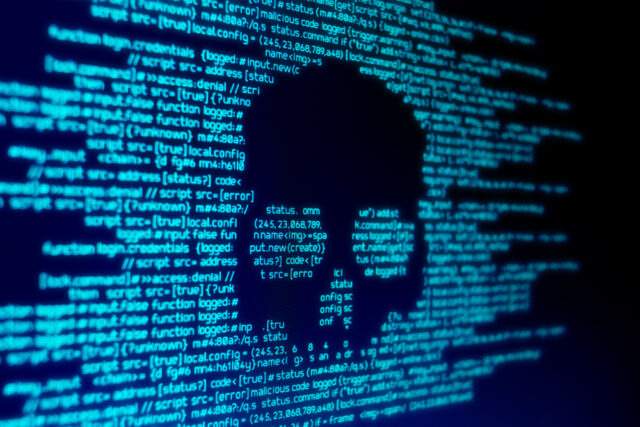Digital Forensics and Incident Response (DFIR): the ultimate guide
Read our complete guide on Digital Forensics & Incident Response (DFIR) to find out what it is, why it’s important, how it works & more!
Read our complete guide on Digital Forensics & Incident Response (DFIR) to find out what it is, why it’s important, how it works & more!

Cyber attacks can occur at any time. Bad actors won’t wait until you’re ready to strike. You’ll need to have a plan of action – a way to navigate the hardship and emerge stronger than before.
Ideally, you’ll invest in a Digital Forensics and Incident Response (DFIR) strategy. Don’t know where to begin? We’ve got you covered.
In this guide, we’ll explore:
Digital Forensics and Incident Response (DFIR) is a field within cybersecurity that focuses on identifying, investigating, and mitigating cyber incidents and security breaches. It involves the application of forensic techniques to collect, preserve, and analyze digital evidence from various sources to understand the scope and impact of security incidents.
DFIR aims to uncover the root causes of incidents, identify the perpetrators, and develop strategies to contain, remediate, and recover from the attacks. It plays a crucial role in helping organizations detect and respond to cyber threats effectively, protect their digital assets, and improve their overall cybersecurity posture.
The field of Digital Forensics and Incident Response (DFIR) has experienced rapid growth since its inception in the early 1980s. Initially used to solve crimes by examining digital evidence, the focus shifted in the 1990s to combat cybercrimes through network-based investigations and tracing digital footprints.
With the rise of cyber attacks and data breaches in the early 2000s, incident response gained prominence, leading to the establishment of formal response teams. As malware threats evolved, DFIR professionals developed sophisticated techniques to analyze and counteract malware.
In the 2010s, DFIR became crucial in detecting and responding to advanced threats and nation-state attacks. Today, DFIR faces new challenges in investigating incidents within complex, interconnected environments brought about by cloud computing, IoT, and digital transformation.
There are many different types of data that can be collected during a digital forensics investigation, including:
DFIR works through a systematic process of investigating digital evidence and responding to cybersecurity incidents. The general steps are as follows:
DFIR is a valuable tool that protects organizations from:
DFIR is a critical component of any organization’s cybersecurity strategy. Here’s why:
DFIR is a complex field. By understanding the challenges, organizations can protect their data more efficiently. Some of the most common difficulties include:
The exponential growth of data poses a significant challenge in digital forensics investigations. Investigators must handle vast amounts of data from various sources, making data collection, processing, and analysis more time-consuming and complex.
Cyber attackers continually develop advanced techniques to evade detection, hide their tracks, and launch complex attacks. This requires professionals to stay updated with the latest attack methods and enhance their response strategy.
Organizations must comply with various data protection and privacy regulations, and DFIR investigations often involve handling sensitive and personally identifiable information. Ensuring that investigations follow legal requirements and privacy regulations while maintaining the integrity of evidence can be challenging.
Maintaining the chain of custody is crucial in digital forensics to ensure the integrity and admissibility of evidence in legal proceedings. As data travels through various systems and personnel, preserving the chain of custody becomes more complex and requires strict documentation and control procedures.
The growing demand for digital forensics experts has led to a shortage of qualified professionals. Recruiting and retaining skilled DFIR specialists is challenging, and organizations may struggle to cope with the increasing demand for cybersecurity and investigative expertise. Training and certification programs can help address this gap but require time and resources.
Digital forensics professionals must ensure that their work is conducted fairly and ethically. Here are some key factors to consider:
Digital forensics often involves the collection and analysis of personal data. It is important to respect the privacy of individuals whose data is being collected and analyzed.
The chain of custody is the chronological record of the evidence, from the time it is collected to the time it is presented in court. To ensure that the evidence is admissible in court, preservation is paramount.
Digital forensics professionals often have access to sensitive information. It is crucial to keep this information confidential and to only share it with authorized individuals.
Digital forensics professionals must respect the due process rights of individuals. This means that individuals must be informed of their rights and be given the opportunity to challenge the evidence that is being collected against them.
Digital forensics professionals must be objective in their work. They must avoid bias and they must not make any assumptions about the guilt or innocence of the individuals involved.
Some digital forensics techniques can be invasive, such as memory analysis and network traffic analysis. It is important to use these techniques only when necessary to ensure that privacy is respected.
Digital forensics professionals may sometimes have access to privileged information, such as attorney-client communications. It is important to respect the privilege of this information and to only share it with authorized individuals.
By following these best practices, organizations can improve their chances of identifying and responding to cyber attacks quickly and effectively. For example:
By using a combination of techniques, DFIR professionals can investigate cyber attacks and identify the responsible parties. Here are some of the most common tools used:
Forensic imaging creates bit-by-bit copies of digital media, such as hard drives, USB drives, and memory cards. This allows professionals to analyze the data on the media without altering it.
Forensic analysis refers to the process of examining and interpreting digital evidence to reconstruct past events, determine the cause of security incidents, and identify the perpetrators behind cybercrimes.
Malware analysis is the process of dissecting malicious software to understand its behavior, identify its capabilities, and develop effective countermeasures to mitigate its impact.
Timeline analysis is used to create timelines of events that occurred during a cyber attack. This can help DFIR professionals to understand the sequence of events and to identify the responsible parties.
Data carving, also known as file carving or data recovery, is a forensic technique used to extract and recover files or data from a storage medium without relying on the file system’s metadata.
Memory analysis, also known as volatile memory forensics or live memory forensics, involves examining the active memory of a computer system to uncover valuable information.
Network analysis tools capture and analyze packets traversing the network, allowing investigators to reconstruct communication sessions, track data flows, and detect anomalies or patterns associated with malicious activities
When choosing a DFIR service, you should consider:
Endpoint Detection and Response (EDR) and Digital Forensics and Incident Response (DFIR) are closely related fields with distinct focuses.
EDR is a proactive approach that focuses on detecting and responding to threats on endpoints, such as laptops, desktops, and mobile devices. EDR solutions typically collect and analyze telemetry data from endpoints, such as system logs, network traffic, and file activity. This data can be used to identify suspicious activity and to respond to threats.
DFIR is a reactive approach that focuses on investigating and responding to cyber attacks. DFIR professionals use a variety of tools and techniques to collect, preserve, and analyze digital evidence. This evidence can be used to identify the attackers, understand the attack, and prevent future attacks.
In the field of DFIR, several future trends are predicted to shape the landscape. Here are just a few:
AI-powered tools will revolutionize DFIR, automating routine tasks like data analysis, anomaly detection, and evidence correlation, accelerating investigations, and enabling faster response times.
As cloud adoption and IoT devices continue to proliferate, DFIR experts will need to develop specialized skills to investigate incidents in these complex, distributed environments.
The increasing volume of data generated by digital devices will necessitate advanced analytics to identify patterns, trends, and potential threats more effectively.
The rise of blockchain technology will demand expertise in investigating cryptocurrency-related crimes and smart contract vulnerabilities.
As virtualization and remote work grow, DFIR professionals will need to adapt to conducting investigations in virtualized and cloud-based environments.
Without a doubt, the DFIR process plays a pivotal role in safeguarding organizations against cyber threats. By integrating DFIR into their cybersecurity strategy, organizations can fortify their defenses, minimize the impact of security incidents, and recover swiftly from cyber attacks.
While it can be complex and time-consuming, its importance cannot be overstated. Many organizations choose to entrust this critical task to cybersecurity experts, allowing them to focus on their core operations while ensuring a robust stance against threats.
CovertSwarm’s team of experts is on hand to answer any questions you may have about DFIR. We also dispose of a highly vetted and qualified incident response team who is on standby to guide you through the complexities of potential attacks and secure your systems.

What is ransomware and how do you prevent it?
Read about what ransomware is and shield your business from ransomware attacks with our guide. Plus, discover best practices for detection, prevention and recovery.

What is phishing and how can you prevent it?
Read our complete guide to learn what phishing is, different types of attack, how it works and how to prevent it

What is malware and how can you prevent it?
Read our guide to find out what malware is, why it exists, different types and how to prevent it to keep your organization safe.